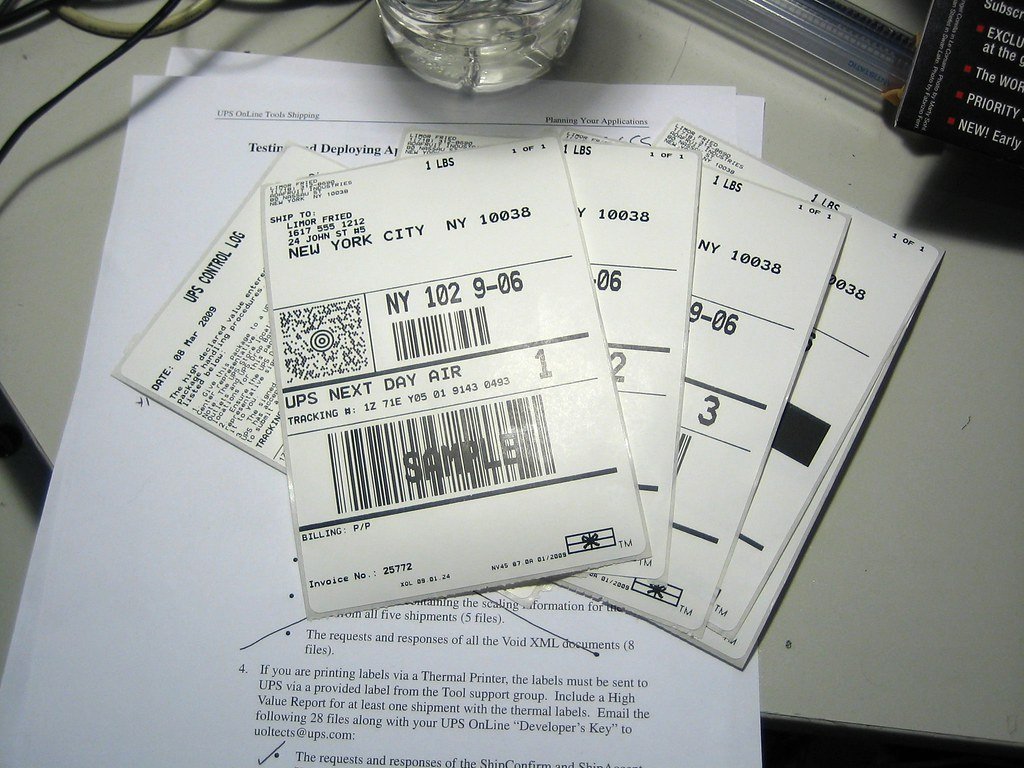Introduction to Barcode Generator APIs
Barcode generator APIs are essential tools that allow developers to incorporate barcode creation functionalities into their applications seamlessly. These APIs enable software developers to generate various types of barcodes programmatically, offering a flexible solution for numerous industries such as retail, logistics, and inventory management. By leveraging these APIs, developers can enhance their applications to support tasks like product labeling, asset tracking, and data collection in a more efficient manner.
The significance of barcode generator APIs cannot be overstated. As businesses increasingly rely on automated processes to maintain efficiency, the integration of barcode systems has become vital. The swift generation of barcodes facilitates smooth inventory management, enhancing accuracy and reducing the likelihood of errors associated with manual data entry. Furthermore, barcodes streamline operations by allowing organizations to track products throughout the supply chain, ensuring timely deliveries and better resource management.
Developers can choose from a variety of barcode generator APIs, each offering unique features tailored to different business needs. For instance, some APIs may provide extensive customization options to generate barcodes in various formats and styles. Other APIs may focus on speed and scalability, catering to high-volume applications that require rapid barcode generation. The versatility of these APIs ensures that developers can find a solution that aligns with their specific requirements while also supporting multiple barcode formats, such as QR codes, UPCs, and Code 128.
Overall, as the demand for efficient data management solutions continues to rise, the role of barcode generator APIs will only grow in importance. Their ability to simplify complex tasks and integrate seamlessly into existing applications makes them a crucial asset for developers looking to enhance operational efficiency across diverse sectors.
Criteria for Evaluating Barcode Generator APIs
When choosing a barcode generator API, developers must consider several key factors to ensure that they select a solution that meets their specific needs. The first criterion is ease of integration. Developers should assess how straightforward it is to integrate the API into their existing applications. A well-designed API should come with clear examples and libraries for popular programming languages, which significantly reduces the integration time and complexity.
Another critical factor is the variety of supported barcode formats. Different applications may require different barcode types, such as QR codes, UPC, EAN, or Code 128. Therefore, it is essential to select an API that supports a comprehensive range of formats to ensure compatibility with various use cases. The broader the range of supported barcode formats, the more versatile the API will be for developers.
Documentation quality plays an equally important role in the evaluation process. Comprehensive and well-structured documentation not only accelerates the learning curve for developers but also aids in troubleshooting issues that may arise during implementation. A detailed guide that includes step-by-step instructions and code samples can be invaluable when integrating a barcode generator API.
Pricing models should also be examined thoroughly. Some APIs offer a pay-as-you-go model, while others may require a subscription fee. It is crucial for developers to choose an API that aligns with their budget while providing the required functionality. Additionally, understanding the pricing structure can help prevent unexpected costs in the future.
Lastly, customer support is a vital aspect of an API’s value proposition. Reliable support can significantly impact the user experience, especially when developers encounter challenges during the implementation process. Evaluating the availability of support channels, such as email, chat, or phone support, can aid in making an informed decision.
Barcode Generator API by Zxing
The Barcode Generator API by Zxing is a widely recognized tool among developers for creating various types of barcodes. With its open-source foundation, Zxing (which stands for “Zebra Crossing”) offers a flexible and adaptable platform for barcode generation. This API supports an extensive range of barcode formats, including QR codes, Code 128, Data Matrix, and numerous others. Such versatility makes it an excellent choice for projects requiring different barcode types. Moreover, its ability to generate barcodes in various sizes and styles adds to the appeal for custom application development.
One of the standout features of the Zxing API is its capacity for integration within various programming environments. The API can be easily embedded into applications developed in languages such as Java, C++, or even within Android-based projects, making it a practical choice for developers across different platforms. This flexibility is crucial for businesses seeking a tailored solution, as it allows the integration of barcode generation functions directly into existing systems without significant disruption to workflows.
In addition to its robust features, the strengths of the Barcode Generator API by Zxing also lie in its vibrant community and continued support. Developers can leverage a wealth of resources, including documentation, forums, and shared experiences. This community-driven approach not only facilitates troubleshooting but also fosters innovation within the project. However, developers should be aware of some limitations; for example, as an open-source tool, Zxing may not always provide the same level of dedicated support and updates as commercial APIs. Nonetheless, the customization options available allow for significant adaptability, making it a worthy consideration for developers seeking a reliable and flexible barcode generation solution.
BarcodeAPI by Barcode Inc.
BarcodeAPI by Barcode Inc. is a prominent choice for developers seeking a comprehensive and user-friendly solution for barcode generation. This API stands out due to its easy-to-navigate interface, which enables both novice and experienced programmers to quickly integrate barcode functionalities into their applications. The simplicity of its design significantly reduces the learning curve, allowing developers to focus on building their projects rather than grappling with complex integration processes.
One of the key advantages of BarcodeAPI is its extensive documentation. The API provides in-depth guides, tutorials, and code snippets that assist developers in understanding and utilizing its features effectively. This robust support framework is essential for developers who may require assistance during the integration process or while troubleshooting issues. Furthermore, BarcodeAPI supports a wide array of barcode formats, including popular choices like QR codes, UPC, EAN, and Code 128, ensuring versatility for various project requirements.
Real-world applications for BarcodeAPI are vast, ranging from inventory management systems to product labeling in retail settings. Businesses utilizing BarcodeAPI can streamline operations and enhance efficiency through the automated generation of barcodes, facilitating processes like tracking and data collection. This capability makes it an essential tool for industries that rely heavily on barcode technology.
Regarding pricing, BarcodeAPI adopts a competitive model that caters to different usage scenarios. It offers tiered plans based on the number of barcodes generated and additional features, providing flexibility for developers with varying budget constraints. However, potential downsides include dependence on internet connectivity for API access and possible rate limitations during peak use. Overall, BarcodeAPI by Barcode Inc. is a valuable resource for developers looking to integrate barcode generation swiftly and efficiently into their projects.
Barcodes4.me API
The Barcodes4.me API has emerged as a preferred choice among developers seeking to incorporate high-quality barcode generation into their projects. It offers an impressive range of barcode formats, catering to various needs, including QR codes, UPC, EAN, and many others. This flexibility makes it an excellent option for developers who require a versatile solution to meet different client specifications or industry standards.
One of the standout features of the Barcodes4.me API is its ability to generate barcodes at high resolution. This is particularly valuable for applications where clarity is crucial, such as inventory management and retail systems. The API facilitates easy integration for developers, offering a straightforward RESTful interface that allows for quick implementation across different programming environments. With detailed documentation available, developers can quickly understand how to work with this API, reducing the learning curve and accelerating project timelines.
Cost efficiency is another significant aspect of the Barcodes4.me API. Its pricing structure is competitive, often appealing to startups and individual developers operating within budget constraints. Many users appreciate the pay-per-use model, which allows businesses to only pay for what they consume, thus avoiding unnecessary overhead costs. However, it is essential to note that while the API is accessible at a low cost, excessive use could lead to higher charges, particularly for high-traffic applications.
Despite its advantages, developers must consider potential drawbacks. Some users have reported sporadic latency issues during peak usage times, which may affect real-time applications requiring immediate barcode generation. Additionally, while the API encompasses many formats, it might lack support for certain niche barcode types, potentially limiting its applicability for specialized industries. Overall, the Barcodes4.me API stands out as an effective solution for those in need of reliable and efficient barcode generation.
4. Scandit Barcode Scanner API
The Scandit Barcode Scanner API is a leading solution favored by developers for its advanced scanning capabilities and versatility. Renowned for its real-time scanning features, this API allows applications to decode barcodes swiftly and accurately, even in challenging environments. Its ability to scan a wide range of barcode formats, including QR codes, UPCs, and EANs, positions it as a versatile tool suitable for various use cases spanning retail, logistics, and inventory management.
Performance metrics for the Scandit Barcode Scanner API are impressive; it boasts a scanning speed of up to 60 frames per second. This high level of performance is particularly advantageous in high-traffic retail settings, where customer satisfaction can correlate directly with the speed of checkout processes. Additionally, the API’s robustness in recognizing barcodes from different angles and distances enhances ease of use, as it significantly reduces the chances of barcode misreads.
Potential use cases for Scandit’s API are diverse. Retail businesses leverage it to optimize point-of-sale systems and streamline inventory checks, while logistics companies implement it for package tracking and asset management. Developers can integrate this API into mobile and web applications with ease, making it adaptable for various platforms and environments.
Pricing for the Scandit Barcode Scanner API is tiered, enabling developers to select a plan that best aligns with their project’s requirements and budget. While the API offers an extensive feature set, it is important for developers to consider potential limitations such as dependency on internet connectivity for certain functionalities and the learning curve associated with mastering the API’s capabilities. By weighing these factors, developers can make informed decisions about implementing the Scandit Barcode Scanner API in their projects.
Dynamsoft Barcode Reader SDK
The Dynamsoft Barcode Reader SDK is recognized for its high-performance capabilities, making it a preferred choice for developers seeking robust barcode recognition solutions. This software development kit is engineered to deliver remarkable accuracy in barcode scanning, a critical factor for industries where precision is paramount. With its advanced algorithms, it supports a wide range of barcode types, ensuring versatility across different applications.
One of the compelling features of the Dynamsoft Barcode Reader SDK is its extensive compatibility with multiple programming languages, including C++, C#, Python, and Java. This cross-platform support is instrumental for developers as it allows seamless integration into various existing systems and applications, fostering a smoother development process. Moreover, the SDK can be implemented on various environments, including desktop, web, and mobile platforms, enhancing its usability and appeal.
The integration procedure is straightforward, with comprehensive documentation available. Developers can quickly incorporate the SDK into their projects by adhering to the well-defined instructions outlined in the documentation. This ensures that even developers with varying levels of experience can implement the API effectively. Additionally, Dynamsoft provides sample code to facilitate the integration process further, which can significantly reduce development time.
Regarding pricing, the Dynamsoft Barcode Reader SDK operates on a subscription-based model, which may vary depending on the volumes purchased and specific requirements of the developers. It is essential to assess budget considerations while factoring in the comprehensive support and reliable performance offered. While the advantages include high accuracy and diverse programming language support, potential drawbacks may include the cost implications and a learning curve for initial setup. Nonetheless, for projects demanding precision and efficiency, the Dynamsoft Barcode Reader SDK stands out as a formidable option for developers.
Comparison of the Top Barcode Generator APIs
In the realm of barcode generation, selecting the right API can significantly impact the efficiency and effectiveness of your project. This section presents a comparative analysis of the top five barcode generator APIs, focusing on their unique features, pricing models, and typical use cases.
The first API, BarcodeAPI, is renowned for its extensive range of barcode formats and ease of integration. With a straightforward pricing model based on actual usage, developers find it cost-effective, particularly for startups with fluctuating demands. BarcodeAPI supports a variety of industries, making it suitable for both retail and logistics applications.
Next is QRCodeGen, which specializes in creating QR codes that can link to various digital content. This API is particularly favored by marketers and event organizers for its advanced customization options, allowing users to embed logos and colors in the QR codes. While QRCodeGen has a subscription plan that may be a barrier for small projects, the API’s versatility in promotional materials can justify the costs.
We also have Labelary, which excels in generating barcodes for labeling needs. Its strong compliance with industry standards makes it an ideal choice for inventory management and product labeling. Labelary operates on a free tier for basic features, appealing to developers who want to prototype before committing financially.
On the other hand, Zint Barcode Studio stands out for its open-source nature. This API allows developers to customize the barcode generation process extensively. However, its complexity can be a downside for those looking for a simple solution. Zint is best suited for developers who possess strong programming skills and wish to tailor their barcode creation capabilities.
Finally, the EasyBarcode API offers a user-friendly interface designed for less technical users. Its pricing plans are flexible, accommodating both small businesses and larger enterprises. EasyBarcode aims to streamline the process, making it a practical choice for e-commerce platforms and small retailers.
In conjunction with these descriptions, a side-by-side comparison table can summarize the strengths and weaknesses of each barcode generator API, aiding developers in making informed decisions tailored to their specific requirements.
Conclusion: Choosing the Right Barcode Generator API
In today’s digital landscape, selecting the appropriate barcode generator API is critical for developers seeking to enhance their applications with efficient and reliable barcode functionalities. Through this exploration of the top five barcode generator APIs, we have highlighted key features and functionalities that differentiate each option. As you move towards making a decision, it is essential to consider various factors that align with your project’s requirements.
One of the primary considerations is compatibility with existing systems. The ideal barcode generator API should integrate seamlessly with your application’s architecture and support the types of barcodes you intend to utilize. Furthermore, the extensibility of the API can dictate future enhancements and the ability to adapt to evolving project needs.
Pricing is another pivotal factor when choosing a barcode generator API. Many APIs offer tiered pricing models, allowing developers to select plans that suit their budget and anticipated usage levels. It is advisable to assess the total cost of ownership, including potential overage fees for high-volume generation, to avoid unexpected expenses down the road.
Functionality should also not be overlooked. Different barcode generator APIs come with varying capabilities, such as support for multiple barcode formats, batch processing, and customization options. Depending on your project’s scale and complexity, certain APIs may be more suitable than others. For instance, developers engaged in e-commerce may prioritize an API that allows for easy integration with inventory management systems and supports numerous barcode types.
Each development team’s unique needs will influence the decision-making process. Taking the time to evaluate these factors will ensure you choose an API that aligns with your objectives. Integrating the right barcode generator API will enhance your application’s performance, provide a seamless user experience, and ultimately contribute to the project’s success.
Resources for Developers
For developers venturing into the realm of barcode generation, a plethora of resources is available to facilitate an in-depth understanding of barcode technologies and their integration into applications. Comprehensive documentation, articles, and community forums can significantly expedite the development process.
One primary source of information is the official documentation provided by barcode API service providers. These documents typically include detailed guidelines on API usage, code examples, and best practices. For instance, the Barcode Generator API Documentation offers exhaustive insights into various barcode formats, including QR codes, UPCs, and EANs. Additionally, many API providers maintain a dedicated section for troubleshooting common issues encountered during implementation.
In addition to official documentation, articles and tutorials authored by industry experts can offer valuable insights. Websites like TutorialsPoint and Smashing Magazine frequently publish articles that cover the principles of barcode technology, alongside practical implementation tips. These resources help demystify the complexities of barcode generation, allowing developers to implement solutions effectively.
Community forums such as Stack Overflow can be another beneficial avenue for developers. Engaging with fellow developers in these forums can yield solutions to specific technical challenges and foster knowledge sharing. Additionally, many barcode API providers maintain support pages where users can submit queries and receive assistance from knowledgeable staff.
By utilizing these resources—documentation, articles, and community support—developers can effectively explore barcode technologies, ensuring smoother integration and a more robust understanding of the capabilities offered by various barcode generator APIs.
© barcodly.com- All rights reserved





